Golden Sample or Potato Chip?
As already written, we have tested this time with pure retail CPUs – exactly with the material that the normal buyer can expect if he wants to upgrade as an "Early Adaptor" in a timely manner. However, we really need to advise caution and prudence at this point, because there are still great fluctuations in terms of production and thus chip quality, especially at the beginning of production. We had to experience this first-hand with the Core i7-7700K.
Inquiries from the motherboard manufacturer have shown that MSI has conducted an inter-house investigation with a total of 30 such retail CPUs in order to determine the voltage settings required for a given cycle in the BIOS, where a stable operation of a certain benchmarks was still possible. Now, while 30 CPUs are still not a really large or statistically relevant quantity, this selection shows how big the quality gap for the Core i7-7700K is now.
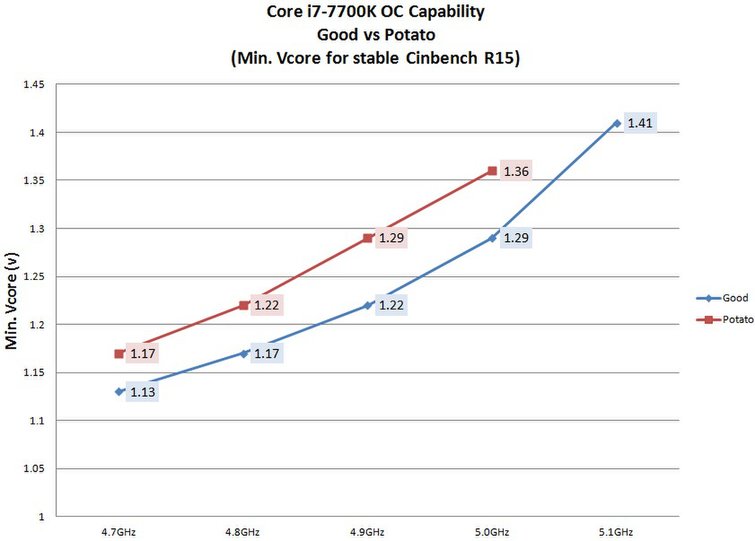
We can see from this curve that the chip stuck in our German test system sticks to the lowest curve of the survey, because the voltages and also the maximum clock of "only" five GHz are absolutely identical. This also explains why this Core i7-7700K had to spread the wings during the factory cycle in the PTU run: it is simply too bad and the voltage is necessarily set too high to remain sufficiently cool!
Undervoltages as emergency patches?
Especially the phenomenon of mass returns of "bad" CPUs or graphics cards occurring in Germany – whereby one can take advantage of a special right of withdrawal in online purchases in Germany – is likely to soon drive some retailers into madness again. Now Intel has been giving each CPU a kind of identifier (VID specification) for generations, by which the motherboard adjusts the voltages in such a way that stable operation within the specifications is possible.
However, the voltage steps are usually quite rough, so that there could also be scope for a possible voltage reduction. That's what we want to test next. Can our Core i7-7700K be taught even more moderate drinking habits by good talk, or is it just a hopeless case for a withdrawal cure at the Betty Ford Clinic?
Our throttling reduces the power consumption values, but only slightly. Only in the PTU stress test did it reach eight watts, whereby the temperatures were slightly lower in all tests and thus the leakage currents decreased slightly as a result. The fact that this was so low was also due to the fact that a voltage reduction in the BIOS was only possible by one stage in order to guarantee stable operation at all. All other attempts ended as blue screen.
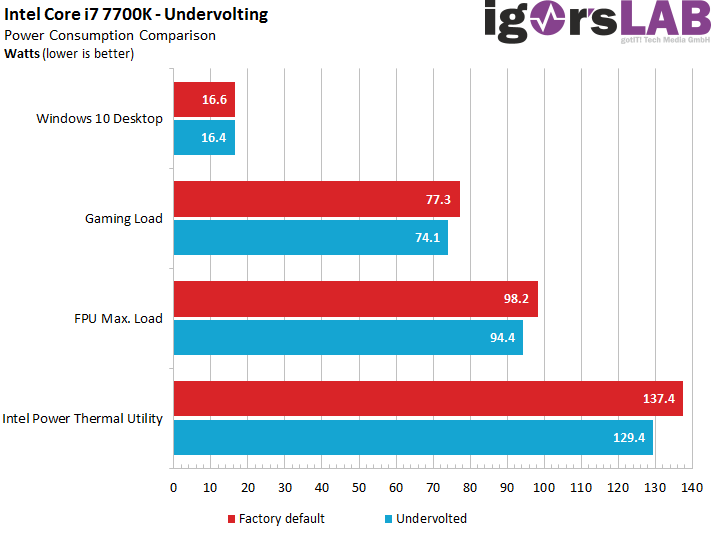
The tensions could be easily reduced, but big jumps look somehow different.
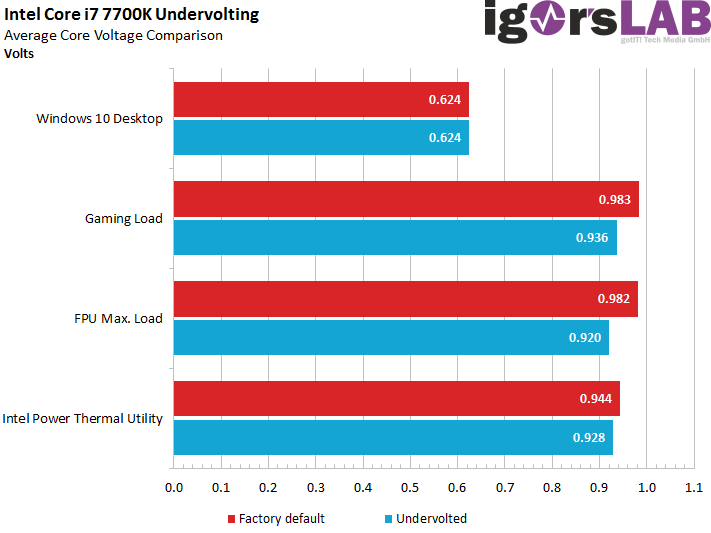
If you have caught such a potato chip, then there are actually only two possibilities: Either you cool as well as possible and hope for cooler days or you live in Germany and try to transport the part back into the Lostrommel and exchange it by revocation. But whether the next lot will not be a new riyre, but the jackpot, is also in the stars. There are no guarantees and the shares of DHL, UPS & Co. remain a safe investment.
An engineering sample in a retail box?
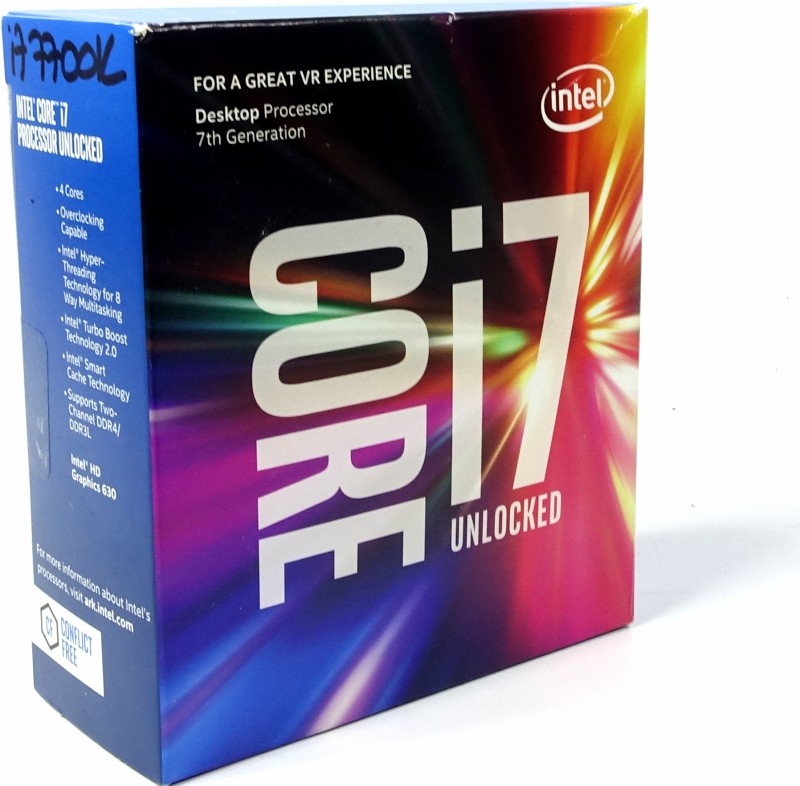 In any case, we were not too surprised when we received the CPU supplied directly by Intel, because at first everything looked like an original retail box, as you can also get it in the store if you buy a tray CPU without a cooler.
In any case, we were not too surprised when we received the CPU supplied directly by Intel, because at first everything looked like an original retail box, as you can also get it in the store if you buy a tray CPU without a cooler.
The amazement was all the greater after the removal of the glued seals during unpacking, because we held a real engineering sample in our hands at the end!
Should it even be a pre-seleted CPU that went much better than our own load-ready test pattern?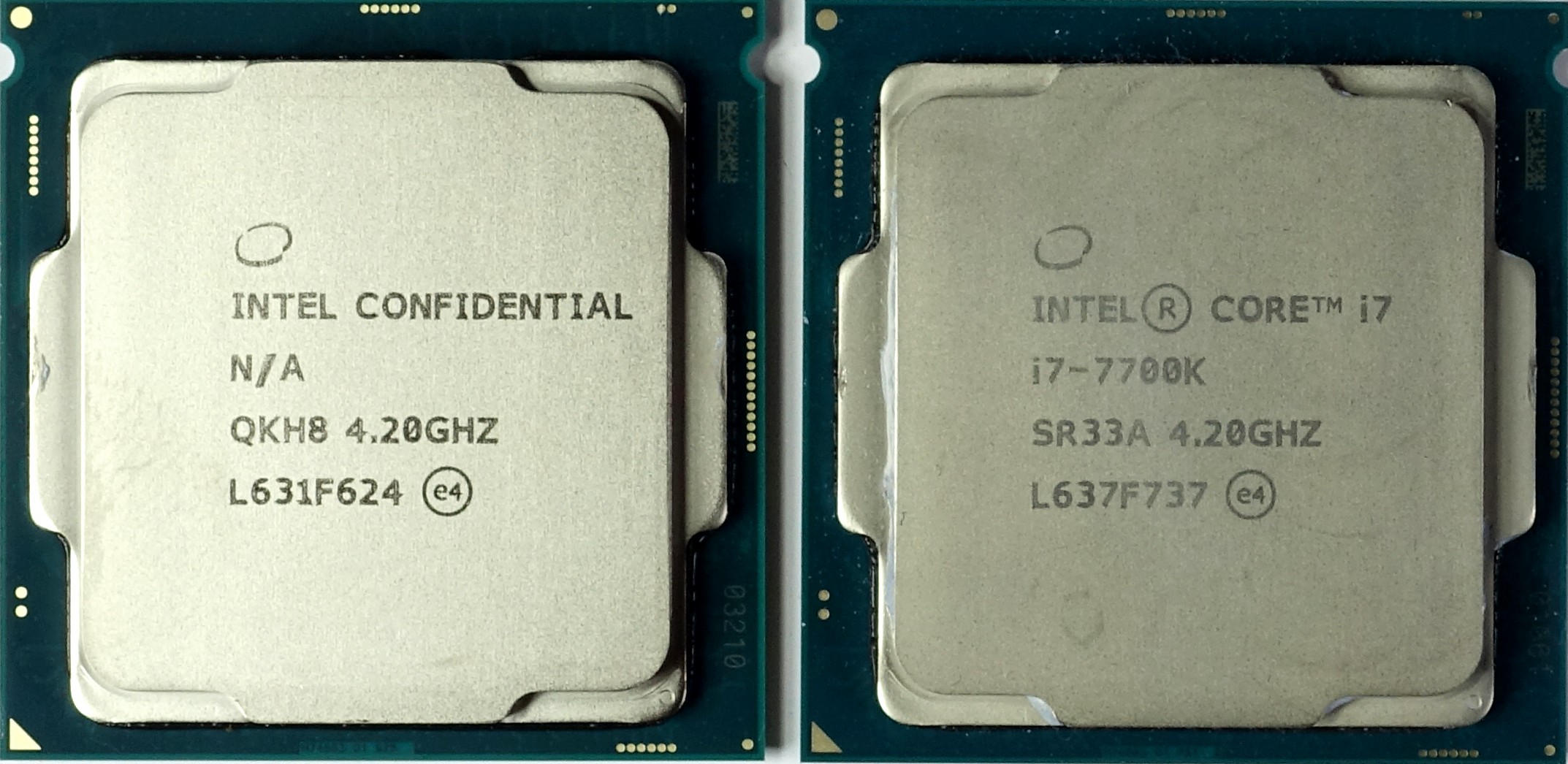
But even the first tests quickly resulted in disillusionment, because both power consumption and temperatures were on almost the same Levelas as our sample in the German laboratory, which we had hunted through the whole Bechmarks for days before. Even if they were only marginal changes, we have of course also documented this result.
Interestingly, the power consumption is about one watt lower for missing to medium loads, but two watts higher for Intel's PTU. The voltages are very similar in the course of the process, so that both CPUs act identically at the end. Unfortunately, the overclocking also ended at five GHz and 1.35 and 1.35 and 1.35 respectively for the two units available in the German laboratory. 1.36 volts.
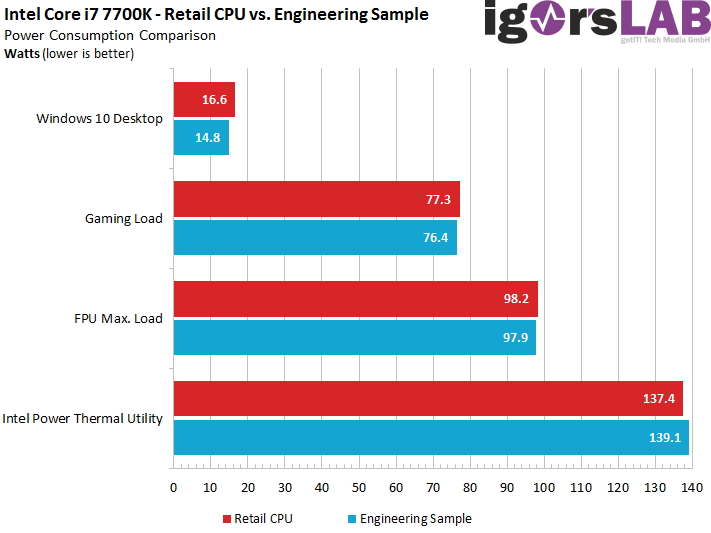
We could have saved ourselves the three hours required for these tests, because the temperatures also look almost identical in the course of the course. We have chosen bar charts with intent, because otherwise all curves would simply lie on top of each other.
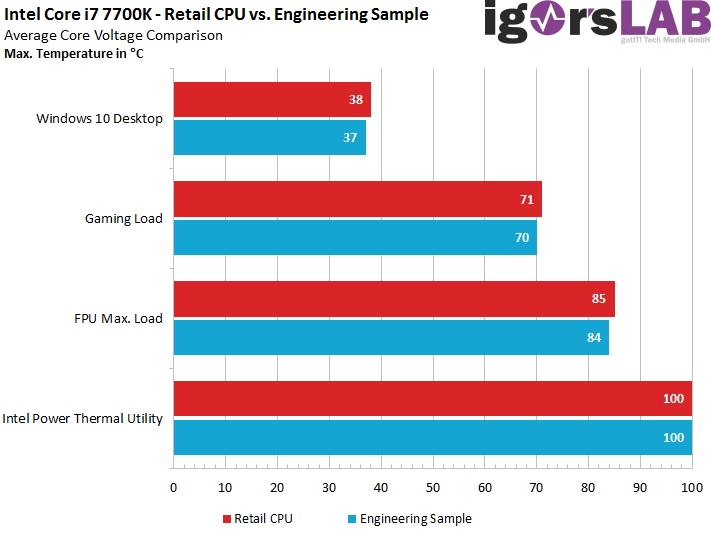
It's better – and how!
While here in Germany we are now sitting on two less good test samples for the part with the benchmarks and detailed measurements, there is a much more economical specimen in the US laboratory. We noticed the particularly much lower power consumption, which makes this CPU act much cooler; the necessary voltages for stable overclocking are also likely to be lower.
However, since we were not able to complete all measurements with identical air coolers, we relied on compact water coolers for our tests, which unfortunately do not perform identically in the end, because the Corsair H100i v2 used in the US laboratory has sporadic defects and otherwise definitely cooled worse than our German specimen. Therefore, we only compare the values for the power consumption at this point, since as such should already be meaningful enough.
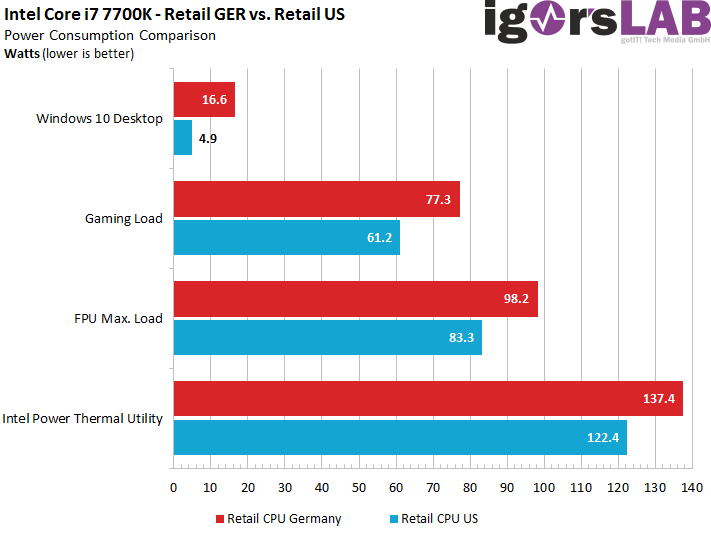
After all, the savings in power consumption could not be more impressive! Whether idle or PTU stress test: Between the two CPUs lie not only worlds, but entire galaxies! It should be noted that these are sales versions and not hand-selected press samples from Intel. We have already seen how these are to be evaluated above.
What stood out enormously was the significantly lower value for Uncore, so that the difference between CPU Package and IA Cores was only about two watts. The leakage currents increased by a maximum of one watt when the CPU was fully heated. If you compare this with the four other stint CPUs, we can already assume that this one CPU seems to be something special.
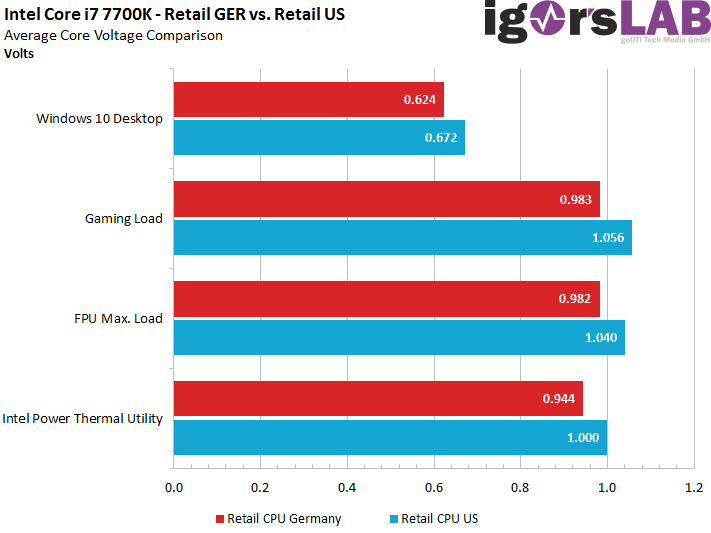
Since we are within a CPU generation, the comparison with the adjacent voltage has to be evaluated slightly differently than in the pure generational comparison. Here, higher voltages with a lower overall power consumption also mean significantly lower currents – the CPU therefore also stays significantly cooler!
The CPU lottery continues
Also at Kaby Lake there will be really good, rather medium-sized and really "bad" CPUs, which have somehow made it through the grid. This will probably have to be lived for the time being, because the manufacturing process does not seem to be mature enough to deliver really high qualities all the time. In any case, we haven't seen such extreme differences since the first quad-core – Intel's Q-6600K.
- 1 - Einleitung
- 2 - Z270, Optane, Overclocking-Tools und HD Graphics 630
- 3 - Test-Setup und Overclocking
- 4 - Benchmarks: Rendering und Office
- 5 - Benchmarks: Workstation-Anwendungen
- 6 - Benchmarks: DTP und Multimedia
- 7 - Benchmarks: Gaming und integrierte Grafik (iGP)
- 8 - Core i7-7700K: Leistungsaufnahme & Temperaturen
- 9 - Core i7-7700: Leistungsaufnahme & Temperaturen
- 10 - Core i5-7600K: Leistungsaufnahme & Temperaturen
- 11 - Core i5-7600: Leistungsaufnahme & Temperaturen
- 12 - Unterschiedliche Chipqualität und ihre Folgen
- 13 - Fazit

















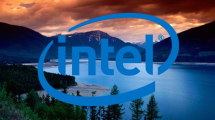















Kommentieren